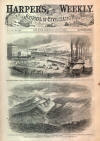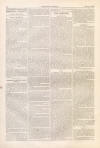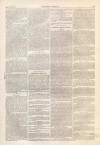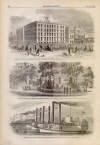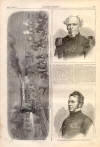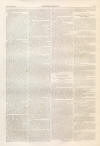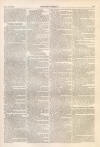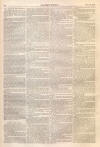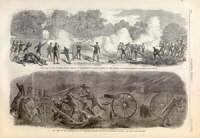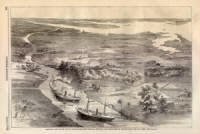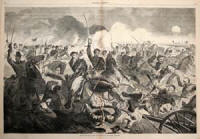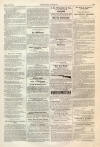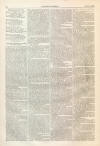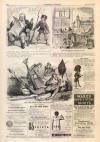General Joe Hooker
|
|
This Site:
|
JULY 5, 1862.] HARPER'S WEEKLY. 421 BRIGADIER-GENERAL HOOKER.BRIGADIER-GENERAL JOSEPH HOOKER, whose portrait we give below, commands a division of the army of the Potomac, and has distinguished himself exceedingly at the Battle of Fairoaks and the other conflicts of the campaign in Virginia. He was born in Massachusetts about the year 1817, and is consequently about 45 years of age. He entered West Point in 1833, and graduated in the artillery in 1837. At the outbreak of the war with Mexico he accompanied Brigadier-General Hamer as Aid-de-camp, and was brevetted Captain for gallant conduct in several conflicts at Monterey. In March, 1847, he was appointed Assistant Adjutant-General, with the rank of Captain. At the National Bridge he distinguished himself, and was brevetted Major; and at Chapultepec he again attracted attention by his gallant and meritorious conduct, and was brevetted Lieutenant-Colonel. At the close of the war with Mexico he withdrew from the service, and soon afterward emigrated to California. The outbreak of the rebellion found him there, and he was one of the first of the old West Pointers who offered his services to the Government. He was one of the first batch of Brigadier-Generals of Volunteers appointed by President Lincoln on 17th May, 1861; and was, on his arrival, placed in command of a brigade of the army of the Potomac, and subsequently of a division. From July, 1861, to February, 1862, he was stationed in Southern Maryland, on the north shore of the Potomac, his duty being to prevent the rebels crossing the river, and to amuse them with their river blockade while McClellan was getting his army into trim. This difficult duty he performed admirably. BRIGADIER-GENERAL SILAS CASEY, U.S.A.—PHOTOGRAPHED BY J. M'CLEES, PHILADELPHIA.—[SEE PAGE 427.]BRIGADIER-GENERAL JOSEPH HOOKER, U.S.A.—[PHOTOGRAPHED BY ANTHONY.]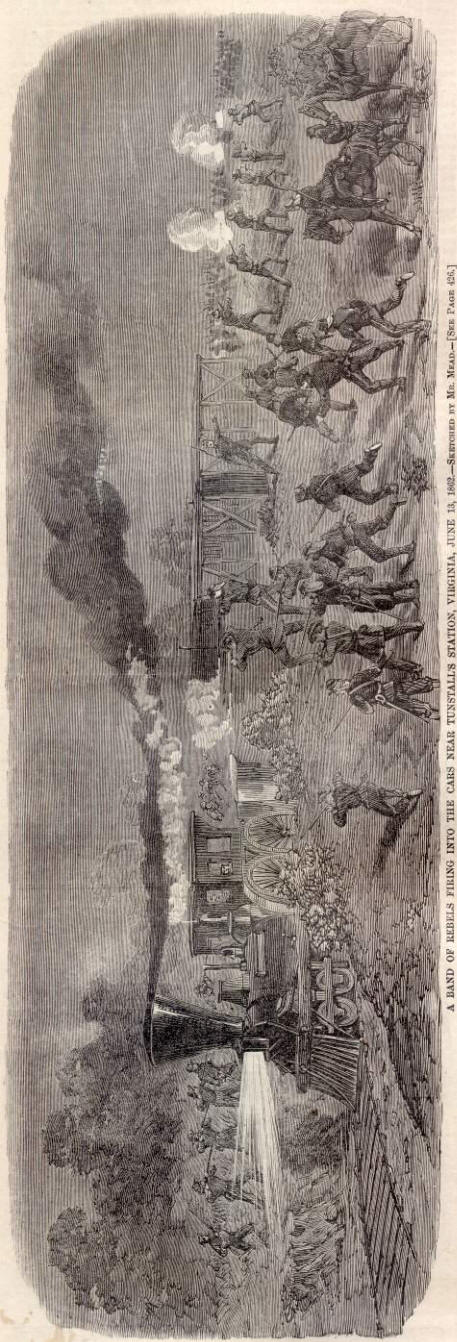 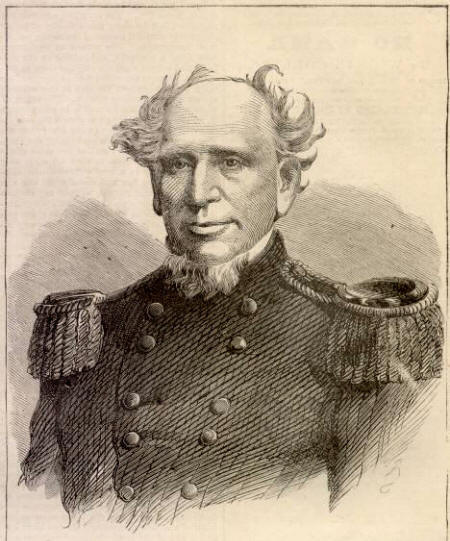 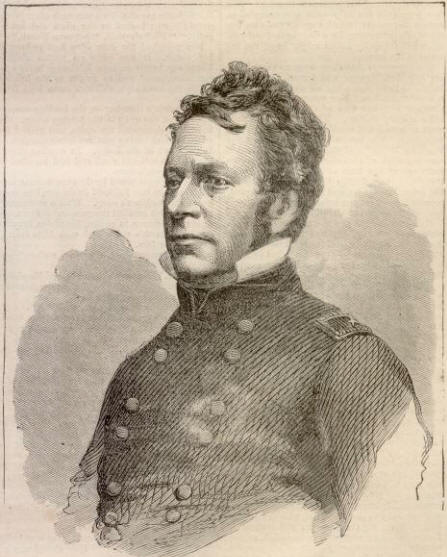 |
||||||||||||||||||||||||||||||
|
|
||
|
|
Site Copyright 2003-2018 Son of the South. For Questions or comments about this collection, contact paul@sonofthesouth.net |
|
|
Are you Scared and Confused? Read My Snake Story, a story of hope and encouragement, to help you face your fears. |
||
